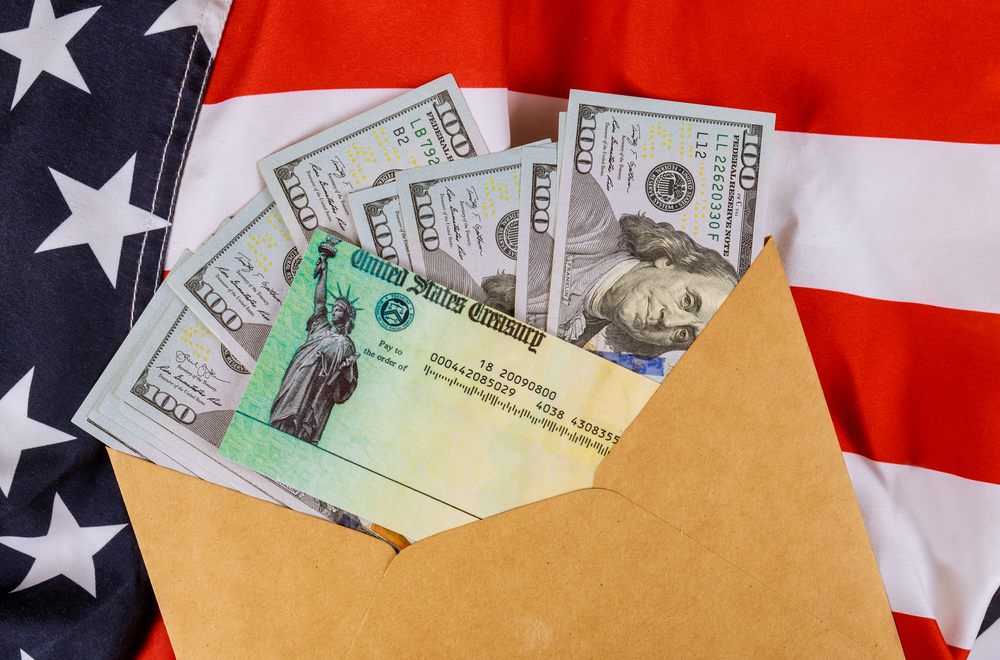
Financial support for small business owners, increased stimulus checks, new programs for the unemployed or those struggling with hunger or facing evictions. These are just a few of the most important projects included in one of the most ambitious attempts to improve our country’s current situation: the $1.9 trillion American Rescue Plan issued by President Joe Biden.
According to him, completing this plan successfully requires plenty of effort; however, now that his Democratic party holds control over both chambers, he says he can begin to address the needs mentioned above and prioritize them for immediate effect.
But what does this grand package truly offer – and is it enough to make America great again for real? Today, we’ll have a detailed look into every goal President Biden has set, as well as how it will impact us.
The American Rescue Plan
-
Increased unemployment aid
In December 2020, the Congress had issued a federal boost for the unemployed population of $300. Now, Biden aims to increase the amount of cash for $400 per week.
Additionally, the President is planning to extend such payments all the way through September. The same extent applies to the Pandemic Emergency Unemployment Compensation program and the Pandemic Unemployment Assistance program (designed for freelancers and independent contractors).
-
Rental assistance and/or eviction moratorium
More than $25 billion is estimated to be invested into rental assistance for households with low or moderate incomes who are unemployed due to the COVID-19 pandemic.
Aside from that, $5 billion will be used to help low-income and unemployed renters pay their monthly bills; Biden is also asking for $5 billion so that each state can provide professional guidance for those facing the risk of eviction.
The federal eviction moratorium was programmed to expire at the end of January, but it is now extended through September 30th.

-
Increased child care funds
Another important request of the American Rescue Plan is to have the Congress develop a $25 billion emergency fund to support childcare providers. This means that child care homes can receive financial help for their rent, payroll, utilities and other measures of protection against the SARS-CoV-2 virus such as protective equipment.
This category also plans to expand the child care tax credit for one year; in simple terms, families can get up to 50% of their spending on child care back (for children under 13 years old only).
-
Supporting schools and states
According to Biden, up to $350 billion should be allocated for territorial, local and state governments to protect their frontline workers financially, reopen schools, organize vaccine distribution and increased testing.
Interestingly enough, a journalist asked a senior Biden administration member whether states could use part of these funds to trigger declines in tax revenue caused by the pandemic. His response was very vague, although another official later declared that the aid is designed to be flexible depending on each states’ needs.
This is perhaps one of the most controversial goals of Biden’s plan because many members of the Republican party deny Democrats’ requests to add to the $150 billion in the March legislation.
The plan also involves offering $20 billion for the most deeply affected public transit agencies to avoid increasing unemployment rates and the cutting of routes.
Another $170 billion is also meant to help K-12 schools, universities and colleges so they can reopen with all safety measures in place or improve their remote learning systems.

-
Increased minimum wage & paid leave
The family leave and paid stick benefits have expired at the end of December, but Biden wants to bring them back all the way through September 30th. This decision can have a tremendous impact, as it can extend benefits to those working for businesses with over 500 employees and less than 50; federal workers, who had been initially excluded from the program, will now be included as well.
In other terms, people who get sick or have to quarantine or self-isolate, as well as those caring for a child who attends remote learning, can receive up to 14 weeks of paid leave. The costs involved for this plan will be initially paid by each person’s employers, but they will be returned to companies with less than 500 workers.
Furthermore, Biden wants to have the Congress increase the minimum wage to $15 an hour; his plan also includes ending the sub-minimum wage for employees with disabilities.
-
Additional help for the hungry
For the past few months, we’ve witnessed hunger becoming a real problem in our country, with people waiting for hours in line just to have something to put on their Christmas table.
Now, Biden wants to extend the 15% increase in food stamp benefits all the way through September (it was initially due to expire in June).
A well-deserved $3 billion will be allocated for women, infants and children to help them meet their nutritional needs. The plan also includes partnerships with local restaurants to provide jobs to laid-off restaurant workers and food for those in need.

-
Increased stimulus payments
Under the American Rescue Plan, eligible recipients will receive another $1,400 per person in addition to the $600 payments which had been approved by the Congress in December.
These newly planned payments are allocated for adult dependents who haven’t been included to the former rounds, such as children over 17 years old. The first round of payments also excluded spouses of undocumented immigrants without Social Security Numbers – and now they are scheduled to receive payments as well.
-
More support for testing and vaccines
One of our primary concerns as a nation right now is to establish an efficient plan against the SARS-CoV-2 virus, as the past year’s political decisions have led us into the critical situation we’re now into.
Biden’s plan aims to invest $20 billion in a national vaccination plan; this process involves developing local vaccination centers all across the country, as well as mobile units in areas difficult to reach. The plan focuses on Medicaid enrollees too, as they will benefit from increased federal support for vaccination.
Another $50 billion will be invested in testing the population, which means purchasing more rapid tests and implementing regular testing in schools so they can reopen safely.
The proposal also aims to hire more than 100,000 public health workers – this would almost triple the total community of health workforce. These funds will support long-term care facilities that are (or will be) experiencing COVID-19 outbreaks, as well as prisons for their mitigation strategies.
RELATED POST: 6 Ways in Which Biden’s American Rescue Plan Can Change Your Life







